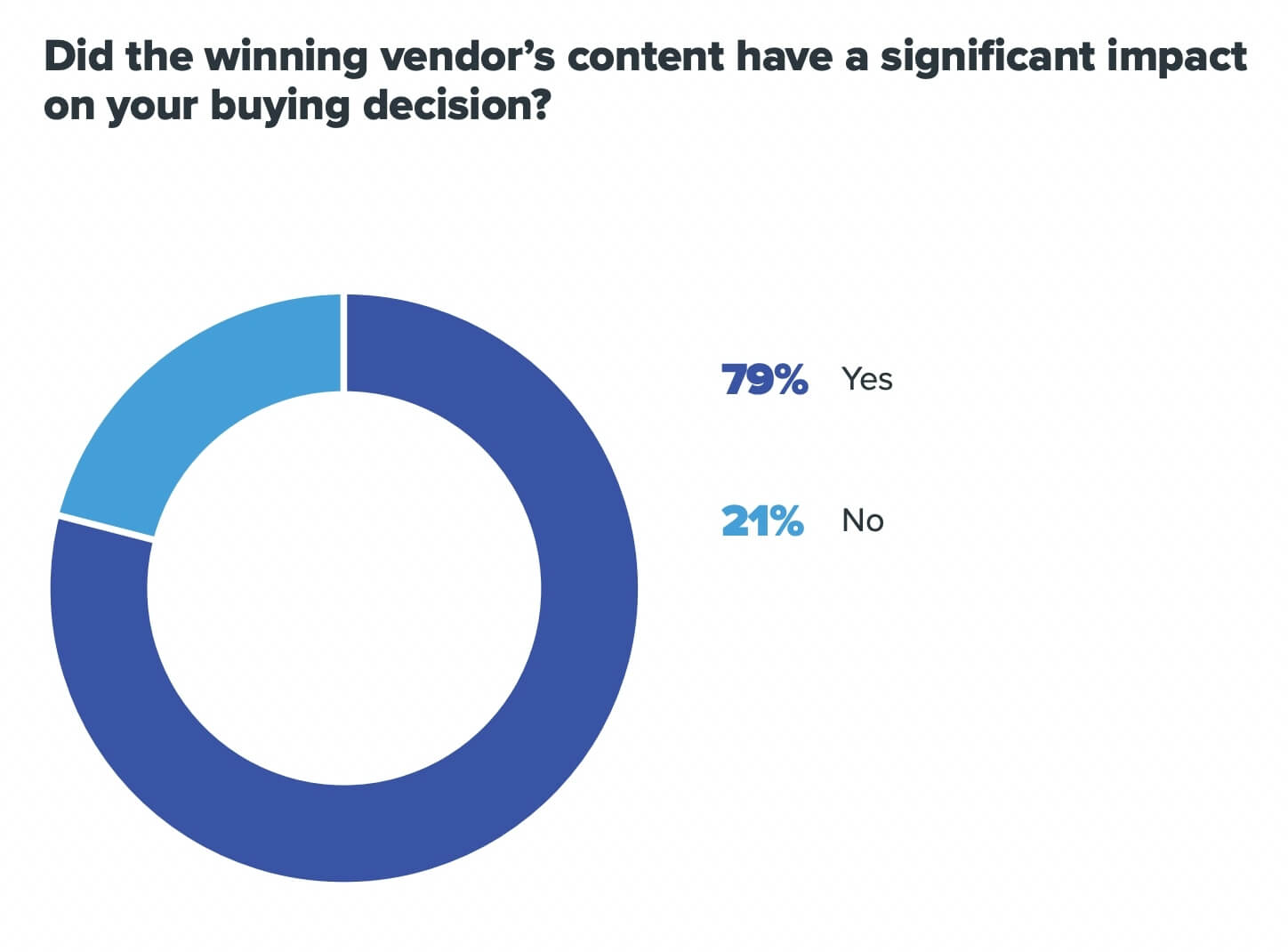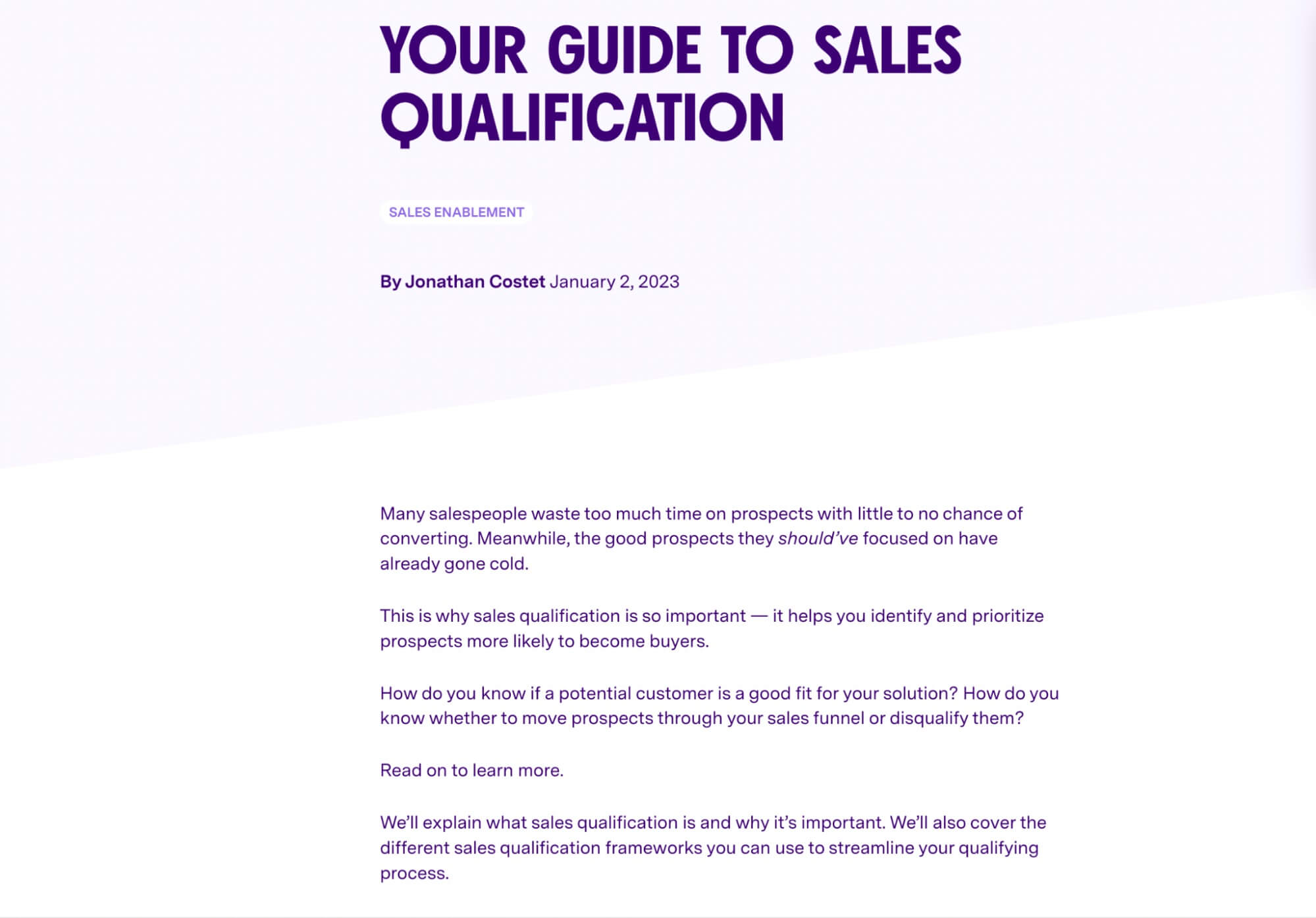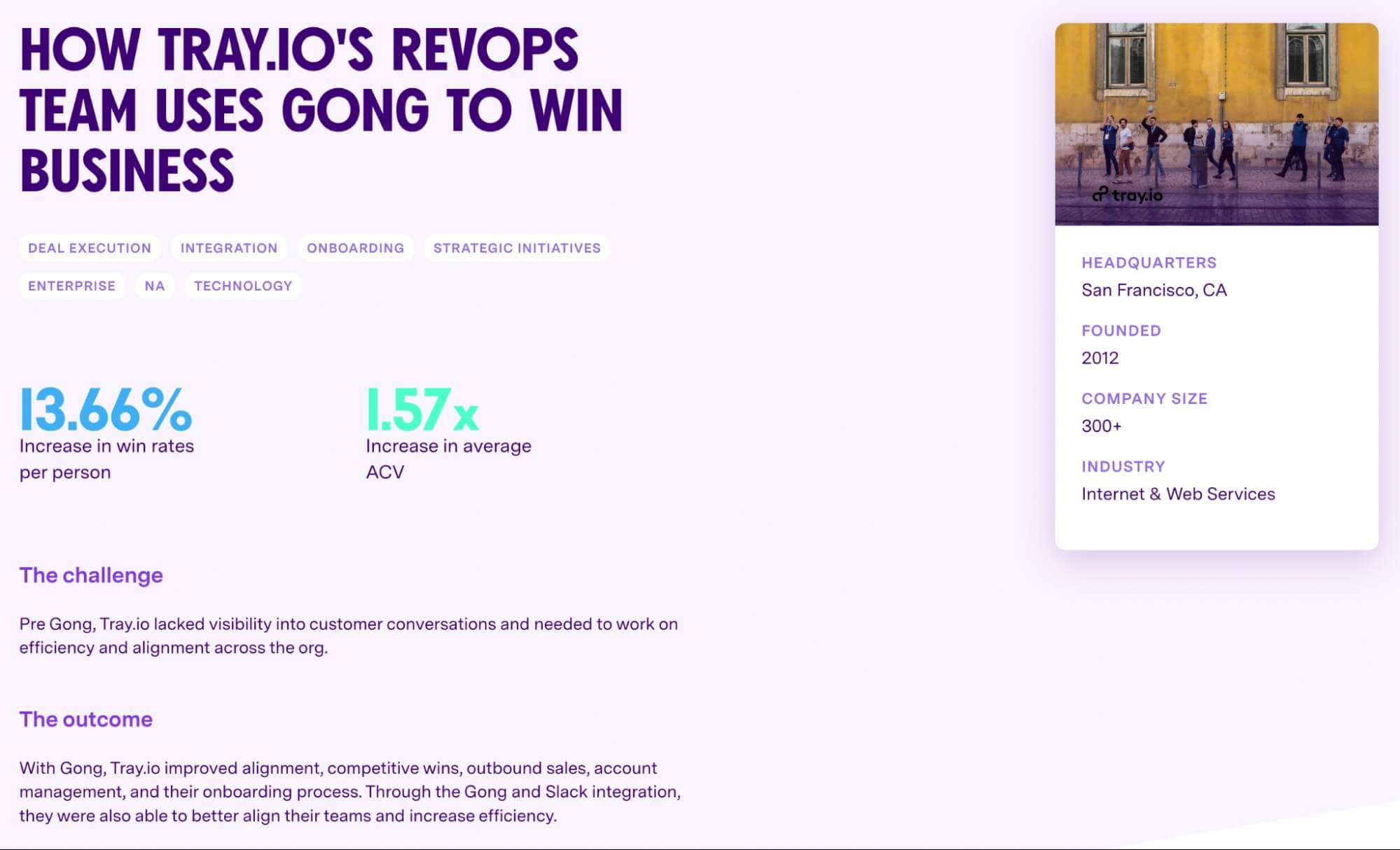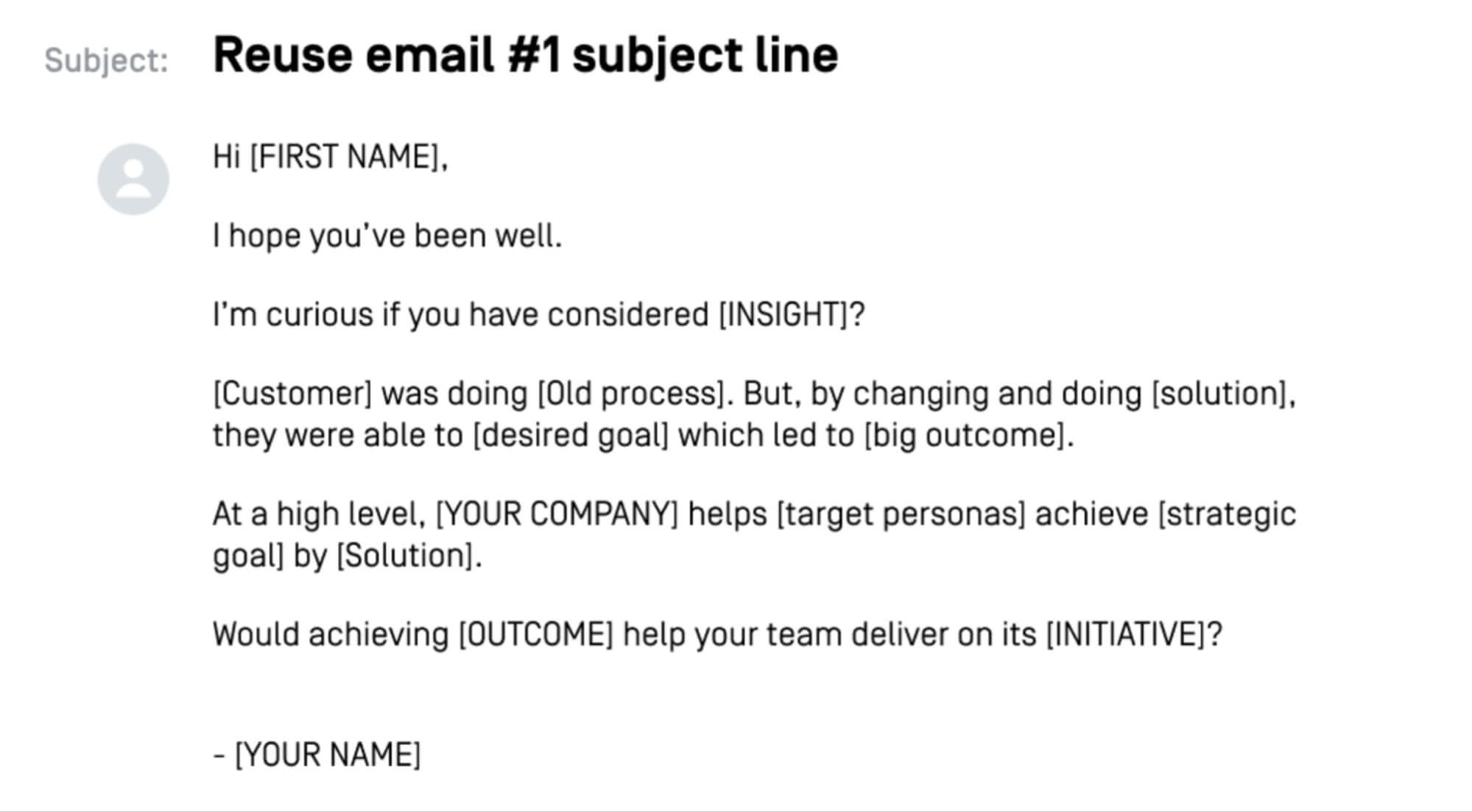8 types of sales enablement content to empower your sales team
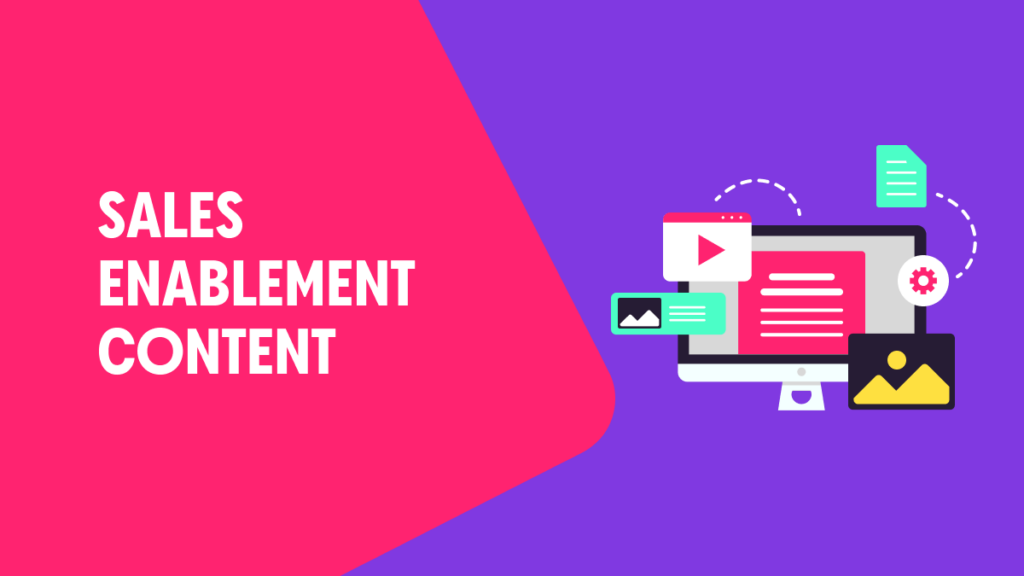
Sales enablement content can make or break your sales process.
The right content can help your salespeople answer questions and address any objections. Most importantly, it can help your reps guide buyers through the sales cycle and close more deals.
But, what type of sales enablement content should you include in your sales enablement strategy? How can you make it more effective for your sales team?
In this article, we’ll look at what sales enablement content is and why it’s important. We’ll also look at the different types of sales content that you should create for your sales organization.
JUMP TO EACH SECTION TO LEARN MORE:
What is sales enablement content?
Sales enablement content is the content that sales reps use to help buyers make a purchasing decision. The purpose is to educate and convert prospects.
Examples of sales enablement content include:
- Fact sheets
- Demos
- Product explainer videos
- Case studies
- White papers
Sales enablement content arms your reps with the product knowledge they need to turn more prospects into buyers. In fact, 79% of B2B buyers indicated that a vendor’s content had a significant impact on their buying decision.
By providing the right content to your buyers based on their buying journey, you can build credibility and effectively position your products or services as the solution.
8 types of sales enablement content
The best sales enablement content strategies use a mixture of content that aligns with each stage of the buyer’s journey: awareness, consideration, and decision.
Here’s a look at 8 types of sales enablement content you should create for your sales organization. We’ll include examples and best practices to aid in your content creation efforts.
1. Blog posts and ebooks
Blog posts (like this one) are informative pieces of content that are typically part of a content marketing strategy. The goal is to increase brand awareness and establish credibility.
Our blog post on sales qualification is a perfect example — it covers a specific topic and provides insights on qualifying prospects. By posting this content to our website, we create an asset that can rank in Google and capture prospects early in the buying process.
While sales enablement content and other content marketing materials are often used for different purposes, they can still be a valuable addition to your sales content library.
For example, let’s say a prospect wants to learn how to send better emails. In this case, a sales professional can invite them to a product demo and link to a specific post or ebook that breaks everything down.
Best practices:
- Optimize your blog posts for search engine optimization (SEO)
- Cover topics that your target audience is actively searching for
- Write your content to fit your buyer personas
2. Product explainer videos
Video is one of the most effective content formats in the buyer’s journey. In fact, 95% of B2B buyers say that video content plays a huge role in moving forward with a purchase.
One valuable piece of sales enablement content is the explainer video — short videos that provide a brief overview of your products or services.
Here’s an example of an explainer video from Gong:
Attention spans are short.
With explainer videos, prospects can quickly learn about your solution. Salespeople can also incorporate them into their sales demos and deliver more effective presentations.
Best practices:
- Keep your videos short, ideally between one to two minutes
- Use simple language and avoid technical jargon
- Add engaging visuals to add more context to your script
3. Case studies
Don’t expect your buyers to just “take your word for it.” While you can claim that your solution delivers on its promise, savvy buyers will be more skeptical.
Case studies are one of the most persuasive tools you can add to your library. In addition to posting them on your site, salespeople can share them with prospects to describe how your solution has helped buyers solve similar problems.
Here’s an example of a case study describing how tray.io’s team uses Gong to generate more sales:
What makes case studies effective is they act as a form of social proof — if others have found success with your solution, so can they.
Best practices:
- Provide a short summary and a few stats at the top of the page
- Describe the results that buyers have achieved and include relevant data
- Have your sales team familiarize themselves with each case study
4. Sales battle cards
“So, why should we pick your solution over [competitor name]?”
Your sales reps better have a good answer.
Because potential deals could fall through if they don’t.
Enter sales battle cards — a “cheat sheet” that provides your reps with talk tracks they can use when competitors are mentioned. It includes answers to common questions, as well as other useful data like pricing information, usage limits, and more.
But the most effective battle cards don’t just do side-by-side feature comparisons — they lean into differentiators that make your solution stand out.
For example, if a competitor has a feature that you don’t, a sales professional would reframe the benefits in a way that leads a prospect back to your solution.
“Yes, you’re correct. [Competitor] has [X feature], but it doesn’t help address [pain point] like [your feature], which allows you to…”
Of course, your battle cards will also include hard data that your reps can use to add more credibility to their statements.
Best practices:
- Limit your battle cards to a one-pager and make it skimmable
- Keep your cards updated and communicate those changes to your team
- Include competitive talk tracks, but don’t give an elevator pitch
Download our free sales battle card template and learn how to build talking points on any topic for each of your competitors.
5. Product sheets
Product sheets are one-page documents that provide buyers with details about your products or services. They typically include company branding and visuals that showcase your solution.
They also include details like:
- Product specifications
- Features and benefits
- Performance facts
- Pricing information
- Use cases
Some buyers just want the “too long; didn’t read” (TL;DR) version of what your solution offers.
Reps can give product sheets to buyers to help them make a buying decision. Alternatively, you can share these resources internally with new reps during onboarding to help them learn key product details before they engage with prospects.
Best practices:
- Be concise and leave any superfluous stuff out
- Include hard data to support your claims
- Add strong visuals and persuasive copy
6. Whitepapers
Companies often use whitepapers — authoritative and in-depth reports that cover a specific topic — as marketing materials to promote their products or services. But they can also help position your company as an industry authority.
Depending on where prospects are in the sales cycle, reps can share whitepapers to help buyers understand certain issues and learn how your solution can help. Of course, your reps can also reference whitepapers to boost their own product and industry knowledge.
Best practices:
- Hone in on one specific pain point or problem
- Include data-backed research to support your claims
- Highlight how your solution can help, but don’t pitch
7. Sales decks
Sales decks are a valuable resource in any sales enablement content library. They consist of a series of slides (usually made in PowerPoint or Keynote) that accompany a sales pitch.
Effective sales decks start by honing in on pain points. (e.g., managing subscriptions). Then they tell a story that gets prospects to shift their thinking to accept new ideas. Finally, they present a strong business case for your solution.
When done right, reps can use sales decks to help prospects see the value of your solution and increase their win rates.
Best practices:
- Research your buyers and customize each slide deck accordingly
- Keep the pitch accompanying your slide deck to 9 minutes
- Build a strong case with before-and-after stories that highlight ROI
Looking for slides that sell?
Download our free sales deck template to power up your presentations.
8. Email templates
Email is an effective sales prospecting channel that reps can use to connect with prospects. But creating emails from scratch takes reps away from more productive work.
Email templates are pre-written messages that reps can customize and send to suit different situations — sending cold emails, following up with a prospect, etc.
If a prospect hasn’t responded to a cold outreach email, a sales professional can use and adapt this email template to generate interest:
Standardized email templates can greatly improve productivity and help reps close more deals right from their inbox.
Best practices:
- Create email templates for different stages of the sales funnel
- Always personalize your emails to increase their impact
- Test your emails to measure what generates responses
Get our free sales email templates to nurture prospects throughout the entire sales funnel.
Transform your sales enablement strategy with Gong
Sales enablement content is an essential part of any sales strategy. When you equip your team with the right resources and training materials, they’ll be able to handle any situation.
We’ve covered 8 types of sales enablement content that you should create and add to your sales library:
- Blog posts and ebooks
- Product explainer videos
- Case studies
- Sales battle cards
- Product sheets
- Whitepapers
- Sales decks
- Email templates
But don’t stop there.
Equip your sales team with sales enablement software from Gong.
Our sales enablement platform enables you to measure the effectiveness of sales scripts, identify areas of improvement, and more. Data-backed insights show you what messaging works (and what doesn’t), so you can create a winning sales playbook.
Request a demo today to see how our sales enablement tool can transform your sales processes.
